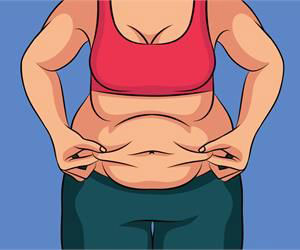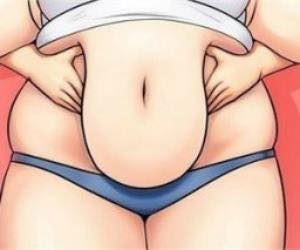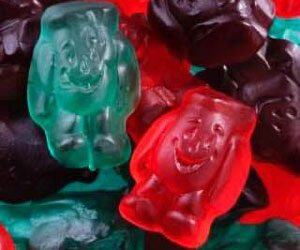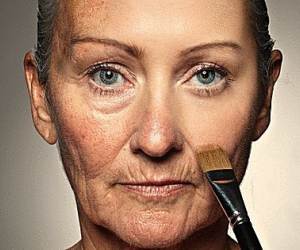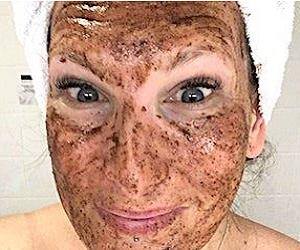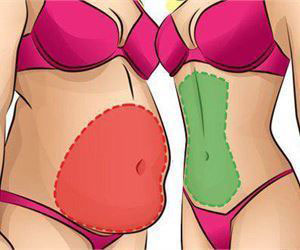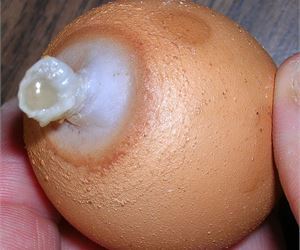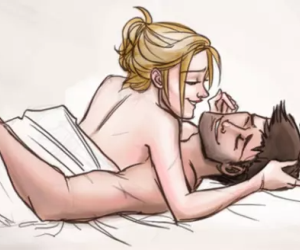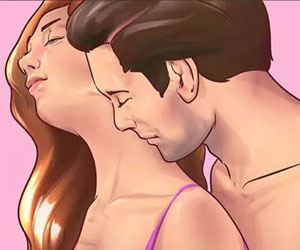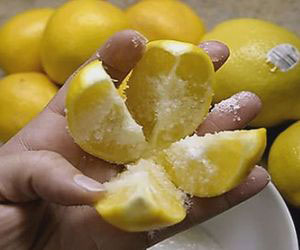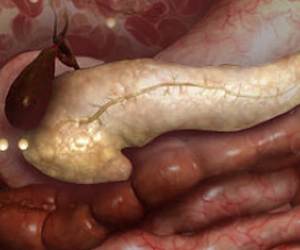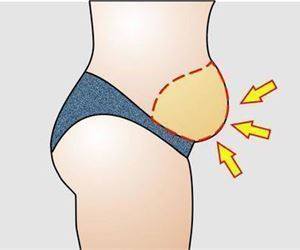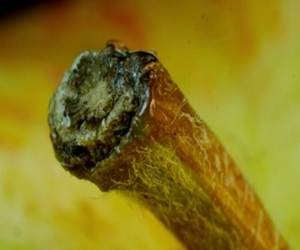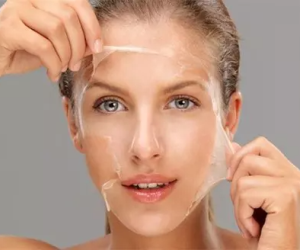Little Jeans Pocket

We use the following everyday items so often that we're certain we know everything about them and their functionality.
Many models of denim jeans come with a ting extra pocket on the side, known as the fifth pocket. People have found different uses for it, such as for cash, small change, or a stick of lip balm, but this small pocket was intended for something very specific â the pocket watch. Back in the 1800s, the pocket watch was a common accessory and was one of the most important and expensive items people kept on themselves, and the fifth pocket was designed specifically with them in mind.
Escalator Brushes

The brushes on the sides of the escalators, also known as skirt deflector, are wrongly believed to be a means to polish shoes. Instead, however, the brushes are a big safety feature designed to minimize the risk of trapping objects between the steps and the side of the escalator (also known as the escalator's skirt'). The brushes help in keeping feet and various objects away from the escalator's skirt, and therefore, avoiding accidents.
Glass Ketchup Bottles

Most of us may not buy the Heinz Ketchup glass bottles anymore, but we'll probably still (struggle to) use them at restaurants from time to time. So, this is a hidden feature you'll want to remember for those times. The number 57', which represents the variety of products Heinz has, is strategically placed on the bottle. As it turns out, the embossed 57' on the neck of the bottle is the place you need to tap on to get sauce out quicker and more efficiently.
Keyboard Layout

Ever wondered why the letters on a computer keyboard aren't in alphabetical order? Well, according to The Guardian, the reason dates back to the time of manual typewriters. Back then, keys were arranged in alphabetical order, but, as a result, typers typed too fast that the âkeyâ arms would get stuck or cross-wired. So, keyboard manufacturers had to randomize the order of keys to slow down typists and keep the machine running smoothly.
Gas Gage Indicator

Most cars have an arrow next to the gas pump symbol on their dashboard. The arrow is there to tell you what side the gas cap and flap are on the car, so you'd know what side of the car you should place near the gas pumps when pulling into a gas station.
Jean Buttons

Yes, those small metal buttons on your jeans, also known as rivets, have a purpose behind them. The rivets are placed on areas of the jeans that are most likely to tear apart by strain or movement while also helping in holding the fabric together, therefore making the jeans last longer.
Pen Caps

Whether it's to allow a proper closing of the cap or to keep the ink flowing, many tried to understand what's the reason behind the holes in pen caps. As it turns out, pen companies added a hole in the cap as a way to allow air passage and prevent choking in case someone accidentally swallows it. This hidden feature, quite literally, saves lives.
Soda Pop Tabs

Every can of soda comes with a tab for an easy opening. The tab features a hole at the top of it, and if you think the whole purpose of this hole is to make it easier to get your finger wedged beneath the tab to open the can, think again. The hole at the top of the pop tab is actually intended to serve as a placeholder for your straw so it won't constantly move around. Mind blown.
Soda Bottles

The design of glass soda and beer bottles is familiar all around the world, but have you ever taken a minute to wonder if there is a purpose behind it? Well, as it turns out, there is. The neck of the glass bottles is intentionally designed in a long and narrow shape to encourage people to hold the bottle at its top so that their body heat won't warm up the rest of their beverage before they drink it.
Automobile Headrest

The adjustable design of the headrest is pretty understandable as a means to comfortably and efficiently support anyone's head. So, what remains the question is, why are they completely detachable? Well, apparently, the answer has to do with survival. The metal bars presented when you completely remove the headrest are there to break the window in case of emergency, such as being trapped in the car.
Beanie Pom Pom's

You might think that the pom-poms attached on the top of beanies and other hats are just a cute and fluffy addition. But, as it turns out, they had an actual purpose in the past. French sailors used hats with pom-poms as a means to protect their heads from the low ceilings of the ship or when the seas were rough.
Keyboard Bumps

Ever wondered why the F' and J' keys on a computer keyboard have little bumps or ridges on them? Well, as it turns out, these keys are specifically designed in this manner as a way to help users type without looking at the keyboard. The F' and J' keys are the âhome keysâ where your index fingers should rest for the most efficient typing. Hence, the little bumps are meant to help your index fingers find their way back to the home position without looking down at the keyboard.
Paper Condiment Holders

Ever wanted some more ketchup at a fast-food restaurant and wondered why the paper condiment cups are so small? Well, as it turns out, we have just been using them wrong all this time. When unfolding these tiny, narrow folded paper cups, they turn into small and wide paper platters that can hold much more sauce.
Grocery Carts

The little metal loops on grocery carts typically located on the back of the children's seat serve a practical purpose. The hoops are meant to hold your grocery bags containing delicate items like bread, chips, or eggs that you don't want to get crushed under everything else.
Range Drawers

Most people may use it to store various kitchen gear like iron pots and pans, but manufacturers actually intended for the drawer below the oven to serve a different purpose. Apparently, the drawer was designed for keeping food warm between cooking it and until you were ready to serve it.
Utensil Handle Holes

The holes at the end of the handles of utensils are great for when you want to hang them, but they also have another great purpose. The holes are also perfect for holding spoons and ladles while cooking. Of course, it won't work any time and depends on your spoon and cookware combination, but overall it's a great way to keep your kitchen counter clean.
Wooden Hangers

As it turns out, wooden hangers are not just a fancier version of the ones made from plastic or wire but also serve another purpose. The wooden hangers are made from a special wood, cedarwood, which is known to repel moths and bugs. These hangers are ideal for heavy clothing that is susceptible to damage from moths and bugs, such as coats, jackets, dresses, and especially items made of wool.
Spaghetti Fork

Ever wondered what is the meaning of the hole in the middle of the spaghetti spork most of us have at our home? While you might have thought it was a means to get rid of remaining water or juices, the hole's actual purpose is to help you measure one serving of spaghetti. Remember this the next time you eat alone and don't want to cook too much pasta.
Sneaker Holes

While you might have thought the two extra holes in the side of Converse All-Star shoes are a design choice, they actually have a purpose to them. According to Cosmopolitan, those holes' purpose is to provide ventilation to your feet, allowing air to circulate around them. The extra two holes also allow you to get creative with lacing, and you can use them when lacing your converse.
Screwdrivers

Yes! You can use your screwdrivers as wrenches as well. Many screwdrivers can be easily slid through a wrench and are used to create more torque. This hidden feature comes in especially handy at complicated heights and angles.
Paper Margins

Unlike what you may have thought, the margins in notebooks aren't there to limit the number of words in one line or for side notes. Manufacturers added margins to writing paper to protect people's work from rats, who, back in the day, were commonly found in homes and enjoyed snacking on paper. Applying the margins left blank spaces on the edges of the paper that even if rats started chewing on it, one's work was still left unharmed.
Beverage Containers

Tired of the rings left on your desk by your takeaway beverage? Well, then is the hidden feature you must know. As it turns out, all beverage containers are designed to double down as coasters. The ridges on the lid allow the base of the cup to sit still, as each size of lids fits the corresponding cup bottom.
Airplane Window Holes

You may have noticed a tiny hole at the bottom of your airplane window before and wondered what's their purpose. Well, it actually serves two purposes. One, the hole allows airflow to prevent building too much much pressure inside the plane, which, as it rises in altitude, will burst the window. Second, the hole prevents the window from getting foggy due to people's warm breath.
Erasers

While many of us have heard that the blue side of the double-color eraser removes pen marks, that is not its actual purpose. The different colors in the eraser should be used to erase marks made by different pencils on different types of paper. While the redish side is for lighter pencils and grades of paper, the blue side is meant to be used on tougher paper and darker pencil marks.
Padlocks

The hole on the bottom of padlocks has a couple of important purposes. The hole serves as a drain, preventing water from getting inside the lock when it's used outside on a wet day. The hole is also used to lubricate the inside of the padlock. If your lock is stuck and you can't open it, you can pour oil into the hole, which should help unlock it without any problem.
US Coins

US quarters and dimes have reeded edges as a way to prevent coin clipping. Back when coins would be made from precious metal, rogues would shave off a tiny amount of metal off the edges of coins, collect the shavings, and later sell them. Doing so in a careful manner allowed coin clippers to make money while also further using the clipped coin. Reeded edges ruined the scheme, as shaving them would be immediately noticeable. Nickles and pennies don't have reeded edges as they are mainly composed of inexpensive metals.
Toothbrushes

As it turns out, the colorful bristles on your toothbrush aren't just a design choice. To remind us that we need to change our toothbrushes every three to four months, manufacturers added color to toothbrushes' bristles. When the color starts to fade or has completely disappeared â it's time to change your toothbrush.
Takeout Boxes

This hidden feature sure is a useful one! Many paper takeout boxes, notably used for Chinese food takeaway, are folded in such a way that when you unfold them, they become a plate. No more greasy hands after digging deep in the takeout box, but unfolding the box's sides down to get the perfect-sized plate.
Tape Measures

When you pull a tape measure out, one of the first things you'll notice is a slot at the end hook area. While you may think it's a design choice, it is, in fact, a feature. The slot is there to grab onto the head of a nail or screw and secure one end of the tape. When your hands are full and/or don't have someone there to hold the other end of the type, this hidden feature sure comes in handy (no pun intended).
Laptop Chargers

Ever wondered what's the purpose of that small cylindrical thing at the end of your laptop charger? Well, the cylinder is called a ferrite bead, and it's there to make sure the wire doesn't transform into a radio. The ferrite thereby blocks radio waves and makes sure the electrical power transmitted through your charger is used for its main purpose â charging.
Aluminum Foil, Saran Wrap Containers

Ever wanted to cut some aluminum foil but couldn't seem to keep the roll in place no matter what? Well, as it turns out, there are two tabs on the ends of the box that, when pushed in, hold the tube in place for easier removal. No more fighting with aluminum foil for us!
Lolipop Sticks

The little hole revealed on the end of a lollipop stick once you finish your candy isn't a while like many were mistakenly led to believe. Instead, the hole at the top of the lollipop stick was added due to a manufacturing reason. See, when pouring the hot caramel into the mold, it seeps into and hardens, thus allowing the candy to stay in place and not fall off.
Soda Bottle Caps

While sometimes the plastic liners and discs on soda bottle caps are used for giving reward codes, that isn't their purpose. The liners inside the cap act as a pressure seal, keeping your drink fresh and trapping the carbon dioxide in the bottle to keep your drink fizzy.
Microwave Dots

The little black dots on the door of your microwave aren't just a decorative choice but serve an important purpose. The back dots are designed to prevent electromagnetic energy from escaping the microwave and protect you from radiation.
Yogurt Lids

Took a yogurt with you but forgot your utensils at home? No problem! Your yogurt's lid can, in a few simple steps, become a spoon. First, fold the foil lid so that the two rounded edges meet in the middle. Next, fold the lid in half so that there is a crease through the center between where the already-folded edges meet. Then, pinch or twist one end of the lid so that you've created an easily-grippable handle. On the other end of the lid, there should be just enough space to scoop your yogurt.
Toblerone

Many people incorrectly believe that the Toblerone bars are triangular as a nod to the Swiss alps, given that the chocolate is originally from Switzerland. However, the design of the candy bar is more practical than it is aesthetic. The pieces are in triangles so that when you press on one of them with your thumb, it will break easily and leave you chocolate-smudge-free.
Hairpins

Many people seem to use bobby pins incorrectly. Apparently, the wavy side of the pin isn't a design choice but fulfills a purpose of a better grip of your hair. The pin should be inserted with the wavy side down and closest to the scalp, while the smooth side should be out and showing, thus allowing a better grip.
Dots On Car Windows

As it turns out, the black dots found on cars and buses' windows aren't there just for aesthetics. The black paint prevents ultraviolet rays from deteriorating the window sealant, which holds the glass in place and keeps rain out of the vehicle. In addition, the black-painted glass heats up faster than the rest of the window. Thus, when heating the glass to bend it in the needed way, the dots help distribute the heat more evenly, preventing the windshield from warping in the heat.
Golf Balls

As it turns out, golf balls weren't always covered in those little dimples but were smooth. However, experienced golfers found that, as time passed, the older balls, which had bumps and nicks on them due to use, traveled further. See, these âfaultsâ help create turbulence in the air around the ball, which then helps to reduce drag. Since then, manufacturers began designing golf balls with their now-distinct dimples so that they get more lift and reach greater distances.
Prescription Bottoms

It's safe to assume that, like many, you have struggled with removing the cap off a prescription bottle at least once. Well, as it turns out, there is a hidden feature in these tricky caps that could save you much time and effort. Once opened, flip the cap upside down and screw it back on so that the raised sections are pointed toward the bottle of the bottle. Now, the child-resistant cap can be removed with much less effort.
Doorknobs

While you may have never noticed this before, most doorknobs are made from brass. And, as it turns out, the use of brass isn't accidental and has an important purpose behind it. See, things made from brass hold up better against bacteria build-up. Doorknobs are touched by many people many times a day, and brass helps in making doorknobs germ-free.
Toothpaste

Back in the 1970s, people wanted a toothpaste that would not only clean their teeth but would also freshen their breath. Aquafresh then launched the first striped toothpaste, adding a blue stripe to indicate their paste could do both. Later, when people started paying more attention to gum health, the brand added a third stripe, the red one, indicating their product could now cover all three actions: cleaning, freshening, and plaque control.
Wine Bottle Dent

Ever wondered why there's a dent at the bottom of your wine bottle? Well, according to Wine Spectator, back when wine bottles were handmade by glassblowers, the dent, also known as a punt, was added to ensure the bottle could stand upright. Nowadays, although we have machines, the punt still exists not only due to the history it holds but also to allow added pressure to the bottle and a better pour of wine, with the thumb sitting comfortably in the indent.
Tic Tac Lid

Ever wanted a Tic Tac mint and struggled to get just one out of the container, if any came out at all? Well, this hidden feature is for you. The small indentation on the lid of the box isn't just for keeping the box tightly closed, but also allows you to take just one Tic Tac mint at a time. Simply shake the box upside down, grab the lid of the box, pull the box back upright, open the lid, and see the single Tic Tac waiting to be grabbed.
Elevator Doors

You may have never noticed it (or have and thought it was a camera), but many elevator doors have a hole in them. The hole in the elevator door is a keyhole and is one of the safety measures deployed in elevators. The hole only appears on the outer side of the elevator doors, and in case the elevator gets stuck, someone outside can use the special key and open the door.
Beauty Product Containers

Ever noticed that beauty products such as shampoos and lotions have a number next to the letter M on the back of them? Well, as it turns out, that is the number of months it takes the product to expire since opening it. For example, as shown in the picture above, an icon printed â12Mâ means that the product will expire one year after the day when you opened it for the first time. It can be as short as three months (3M) and as long as 36 months (36M).
Ikea

Many Ikea shoppers wonder why there's a gap or several tiny ridges on the bottom of their mugs. Well, according to Ikea's website, that gap is known as a drainage gate, and its purpose is to prevent the accumulation of water while the mug is upside down in the dishwasher.
McFlurry Spoons

Ever wondered why the McFlurry spoons are so sturdy and have a square hole at the top of them? Contrary to popular belief, it isn't so that the spoons could be used as straws, but for a different purpose. The spoon is designed in this manner to allow it to attach to the machine that mixes the ice cream and toppings together.
Jerry Cans

Jerrycans were designed in 1930s Germany for military use. Jerrycans were designed with three handles as it was specified that a soldier should be able to carry two full containers or four empty ones by holding onto the outer handle, according to Wikipedia. The three handles also come in handy when two people are carrying a jerrycan, with each grabbing one of the outer handles, or when you're grabbing it on you're own and can use the middle handle.
Bread Clips

Ever wondered why the bread clips come in different colors? As it turns out, the color of the bread clip lets you know which day of the week the bread was baked on. According to TastingTable, the codes are as follows: Monday â blue, Tuesday â green, Thursday â red, Friday â white, and Saturday â yellow.
Juice Boxes

This hidden feature isn't so much for adults as it is for children and parents. When holding the juice box by its middle, kids tend to press it too firmly, causing the juice to spill out of the straw everywhere. Well, as it turns out, juice boxes have a hidden feature that can prevent this sticky situation. The flaps on the sides of the juice box are meant to be turned outward, making it easier for children to hold the juice box without spilling any of its content.
Utility Knife

As most people own a box cutter or utility knife, you probably noticed some of their design features, such as the thick plastic cap at the end or the little score lines between the blades. Well, as it turns out, these features aren't only an aesthetic choice but have a purpose to them. The score lines show where exactly to break off the blade for a new, sharper blade, while the plastic cap is removable and can be used to cut off the blade.
IPhone

If you are an avid iPhone user, then you are probably familiar with the little black dot on the back of it, next to the camera lenses and the flash. While many may believe it's a part of the flash due to the physical closeness between the two, this little dot is, in fact, a microphone. Among other purposes, this microphone helps with noise suppression and ensures a better quality of conversation.
Staplers

Ever stapled a group of pages together but then ripped them trying to remove the staple? Well, as it turns out, staplers have a hidden feature that provides an alternative to this situation. See, when you spin the metal plate on the bottom of the stapler around, the staples would face outward instead of inward, making them easier to remove.
Half Belts

Half-belts are a common feature in many coats and jackets today, and while you might think that they're simply a design choice, they originally had a very useful purpose. Initially, the half-belt was invented for soldiers who had oversized jackets that they also used as blankets. The soldiers then used the half-belt to gather and hold any extra fabric so that they could move freely.
Patches

While patches have become a highly popular feature on backpacks with brands like Herschel Supply Co., Jansport, etc., very few know that they are more than just a design choice and serve a purpose. Called a âlash tab,â this patch was originally designed for travel packs to allow people to carry extra equipment. Strings can fit through the two slits of the patch, thus allowing people to hang extra stuff on the front of the bag.
Womens Underwear

Many pairs of women's underwear contain a little pocket which women use to store things such as money or tampons. However, that isn't its purpose. The pocket, which is called a panty gusset, is just an extra piece of softer fabric sewn in for women's hygiene and to allow their skin to breathe. The âpocketâ is simply a result of manufacturers' unwillingness to spend the time and money to sew it completely shut.
Silica Gel Packets

Whenever we get something new, like a pair of shoes, a new bag, etc., it usually comes with a silica gel packet. While we know that these packets are there to preserve the product's âfreshness,â we can't help but wonder what that actually means. Well, as it turns out, silica gel packets absorb moisture from their environment and can absorb up to 50% of the humidity in an enclosed environment. So next time you receive a packet, save and use it â whether it's to keep bacteria from your gym bag or dry your phone after it fell in the water.
Shirt Buttons

While the purpose of buttons is pretty straightforward, the reason why they're located on the left side of a shirt, even though most people are right-handed, is unknown to many. As it turns out, putting buttons on the left of clothes is an old tradition that remained from a time when buttons represented your social and financial status. If you owned buttons, you were most likely dressed by a chambermaid, and, as the chambermaid's right is to your left, the tradition came to be.
Rulers

Rulers can be found in almost every household, and while their purpose is rather obvious, it is the purpose of the small hole at the end of rulers that is lost on most. While some have suggested that it's there so you can draw a circle, it isn't, and the need to draw a small circle rarely seems to occur. As it turns out, the purpose of the hole at the end of the ruler is so you can hang your ruler up.
